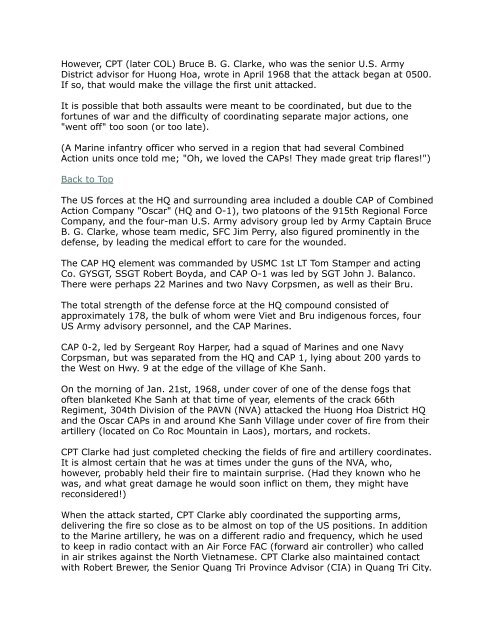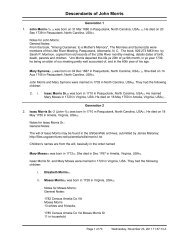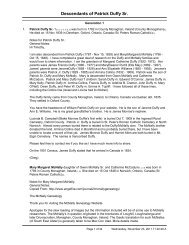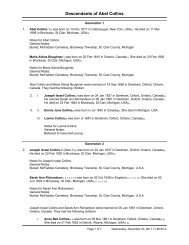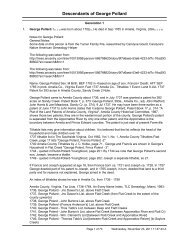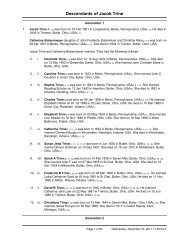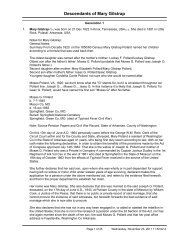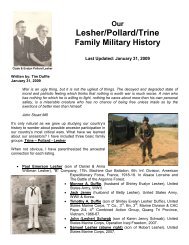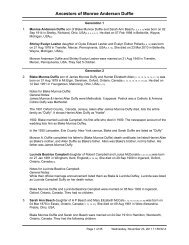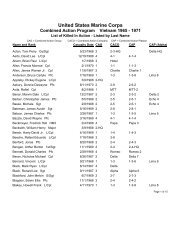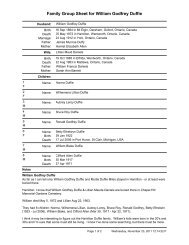History of Oscar Company - USMC Combined Action Platoon ...
History of Oscar Company - USMC Combined Action Platoon ...
History of Oscar Company - USMC Combined Action Platoon ...
Create successful ePaper yourself
Turn your PDF publications into a flip-book with our unique Google optimized e-Paper software.
However, CPT (later COL) Bruce B. G. Clarke, who was the senior U.S. Army<br />
District advisor for Huong Hoa, wrote in April 1968 that the attack began at 0500.<br />
If so, that would make the village the first unit attacked.<br />
It is possible that both assaults were meant to be coordinated, but due to the<br />
fortunes <strong>of</strong> war and the difficulty <strong>of</strong> coordinating separate major actions, one<br />
"went <strong>of</strong>f" too soon (or too late).<br />
(A Marine infantry <strong>of</strong>ficer who served in a region that had several <strong>Combined</strong><br />
<strong>Action</strong> units once told me; "Oh, we loved the CAPs! They made great trip flares!")<br />
Back to Top<br />
The US forces at the HQ and surrounding area included a double CAP <strong>of</strong> <strong>Combined</strong><br />
<strong>Action</strong> <strong>Company</strong> "<strong>Oscar</strong>" (HQ and O-1), two platoons <strong>of</strong> the 915th Regional Force<br />
<strong>Company</strong>, and the four-man U.S. Army advisory group led by Army Captain Bruce<br />
B. G. Clarke, whose team medic, SFC Jim Perry, also figured prominently in the<br />
defense, by leading the medical effort to care for the wounded.<br />
The CAP HQ element was commanded by <strong>USMC</strong> 1st LT Tom Stamper and acting<br />
Co. GYSGT, SSGT Robert Boyda, and CAP O-1 was led by SGT John J. Balanco.<br />
There were perhaps 22 Marines and two Navy Corpsmen, as well as their Bru.<br />
The total strength <strong>of</strong> the defense force at the HQ compound consisted <strong>of</strong><br />
approximately 178, the bulk <strong>of</strong> whom were Viet and Bru indigenous forces, four<br />
US Army advisory personnel, and the CAP Marines.<br />
CAP 0-2, led by Sergeant Roy Harper, had a squad <strong>of</strong> Marines and one Navy<br />
Corpsman, but was separated from the HQ and CAP 1, lying about 200 yards to<br />
the West on Hwy. 9 at the edge <strong>of</strong> the village <strong>of</strong> Khe Sanh.<br />
On the morning <strong>of</strong> Jan. 21st, 1968, under cover <strong>of</strong> one <strong>of</strong> the dense fogs that<br />
<strong>of</strong>ten blanketed Khe Sanh at that time <strong>of</strong> year, elements <strong>of</strong> the crack 66th<br />
Regiment, 304th Division <strong>of</strong> the PAVN (NVA) attacked the Huong Hoa District HQ<br />
and the <strong>Oscar</strong> CAPs in and around Khe Sanh Village under cover <strong>of</strong> fire from their<br />
artillery (located on Co Roc Mountain in Laos), mortars, and rockets.<br />
CPT Clarke had just completed checking the fields <strong>of</strong> fire and artillery coordinates.<br />
It is almost certain that he was at times under the guns <strong>of</strong> the NVA, who,<br />
however, probably held their fire to maintain surprise. (Had they known who he<br />
was, and what great damage he would soon inflict on them, they might have<br />
reconsidered!)<br />
When the attack started, CPT Clarke ably coordinated the supporting arms,<br />
delivering the fire so close as to be almost on top <strong>of</strong> the US positions. In addition<br />
to the Marine artillery, he was on a different radio and frequency, which he used<br />
to keep in radio contact with an Air Force FAC (forward air controller) who called<br />
in air strikes against the North Vietnamese. CPT Clarke also maintained contact<br />
with Robert Brewer, the Senior Quang Tri Province Advisor (CIA) in Quang Tri City.


